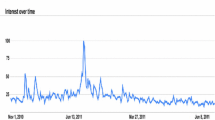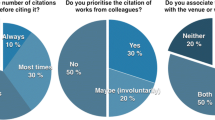Abstract
The advent of social media has enabled us to explore the impact of academic entities beyond the conventional bibliometric community. The traditional bibliometric indicators such as citation count, h-index and SNIP metrics aim to represent the propagation of knowledge in the academic world rather than the impact of the research on the wider world. In this study, we are interested in measuring the impact of the academic world on social media. We first create the 2-layered graph where the first layer is the bipartite graph between academic and social media entities and a second layer is the graph between social media entities. Then, we employed the heat diffusion-based metrics to measure the influence of academic entities in social media. Thus, we evaluate the academic entities by (1) predicting links between academic entities and social media and (2) suggesting memes for the academic entities. Our analysis on predicting links between scientist and social media entities showed the AUC-ROC score of 0.73 and the AUC-PR score of 0.30. Similarly, predicting links between scientific publications and social media entities showed the AUC-ROC score of 0.80 and the AUC-PR score of 0.19. Our approach can also suggest textual memes for scientific publications.





Similar content being viewed by others
Notes
References
Alperin JP, Gomez CJ, Haustein S (2018) Identifying diffusion patterns of research articles on twitter: a case study of online engagement with open access articles. Public Underst Sci. https://doi.org/10.1177/0963662518761733
Barnes C (2015) The use of altmetrics as a tool for measuring research impact. Aust Acad Res Libr 46(2):121–134
Cai D, He X, Han J, Huang TS (2011) Graph regularized nonnegative matrix factorization for data representation. IEEE Trans Pattern Anal Mach Intell 33(8):1548–1560
Castellano C, Fortunato S, Loreto V (2009) Statistical physics of social dynamics. Rev Mod Phys 81(2):591
Clauset A, Moore C, Newman ME (2008) Hierarchical structure and the prediction of missing links in networks. Nature 453(7191):98–101
Costas R, de Rijcke S, Marres N (2017) Beyond the dependencies of altmetrics: conceptualizing heterogeneous couplings between social media and science. altmetrics17 The dependencies of altmetrics
Cunningham H (2002a) Gate: a framework and graphical development environment for robust NLP tools and applications. In: Proc. 40th annual meeting of the association for computational linguistics (ACL 2002), pp 168–175
Cunningham H (2002b) Gate, a general architecture for text engineering. Comput Humanit 36(2):223–254
Díaz C, Mauricio C (2013) Defining and characterizing the concept of internet meme. CES Psicol 6(2):82–104
Eysenbach G (2011) Can tweets predict citations? Metrics of social impact based on twitter and correlation with traditional metrics of scientific impact. J Med Internet Res 13(4):e123
Finkel JR, Grenager T, Manning C (2005) Incorporating non-local information into information extraction systems by Gibbs sampling. In: Proceedings of the 43rd annual meeting on association for computational linguistics. Association for Computational Linguistics, pp 363–370
Garcia-Gasulla D, Ayguadé E, Labarta J, Cortés U (2016) Limitations and alternatives for the evaluation of large-scale link prediction. arXiv preprint arXiv:161100547
Haustein S, Bowman TD, Costas R (2015) Interpreting” altmetrics”: viewing acts on social media through the lens of citation and social theories. arXiv preprint arXiv:150205701
Huo L, Ma C (2017) Dynamical analysis of rumor spreading model with impulse vaccination and time delay. Phys A Stat Mech Appl 471:653–665
Katz L (1953) A new status index derived from sociometric analysis. Psychometrika 18(1):39–43
Kim M, Newth D, Christen P (2014) Trends of news diffusion in social media based on crowd phenomena. In: Proceedings of the 23rd international conference on world wide web. ACM, pp 753–758
Kuhn T, Perc M, Helbing D (2014) Inheritance patterns in citation networks reveal scientific memes. Phys Rev X 4(4):041,036
Lafferty J, Lebanon G (2005) Diffusion kernels on statistical manifolds. J Mach Learn Res 6(Jan):129–163
Leskovec J, Backstrom L, Kleinberg J (2009) Meme-tracking and the dynamics of the news cycle. In: Proceedings of the 15th ACM SIGKDD international conference on Knowledge discovery and data mining. ACM, pp 497–506
Ma H, Yang H, King I, Lyu MR (2008a) Learning latent semantic relations from clickthrough data for query suggestion. In: Proceedings of the 17th ACM conference on information and knowledge management. ACM, pp 709–718
Ma H, Yang H, Lyu MR, King I (2008b) Mining social networks using heat diffusion processes for marketing candidates selection. In: Proceedings of the 17th ACM conference on information and knowledge management. ACM, pp 233–242
Newman ME (2002) Spread of epidemic disease on networks. Phys Rev E 66(1):016,128
Page L, Brin S, Motwani R, Winograd T (1999) The pagerank citation ranking: bringing order to the web. Tech. rep., Stanford InfoLab
Priem J, Groth P, Taraborelli D (2012a) The altmetrics collection. PloS one 7(11):e48753
Priem J, Piwowar HA, Hemminger BM (2012b) Altmetrics in the wild: using social media to explore scholarly impact. arXiv preprint arXiv:12034745
Radicchi F, Fortunato S, Markines B, Vespignani A (2009) Diffusion of scientific credits and the ranking of scientists. Phys Rev E 80(5):056,103
Rowlands I, Nicholas D, Russell B, Canty N, Watkinson A (2011) Social media use in the research workflow. Learn Publ 24(3):183–195
Sahami M, Heilman TD (2006) A web-based kernel function for measuring the similarity of short text snippets. In: Proceedings of the 15th international conference on world wide web. ACM, pp 377–386
Shifman L (2013) Memes in a digital world: reconciling with a conceptual troublemaker. J Comput Mediat Commun 18(3):362–377
Spitzberg BH (2014) Toward a model of meme diffusion (m3d). Commun Theory 24(3):311–339
Sugimoto CR, Work S, Larivière V, Haustein S (2017) Scholarly use of social media and altmetrics: a review of the literature. J Assoc Inf Sci Technol 68(9):2037–2062
Thelwall M (2008) Bibliometrics to webometrics. J Inf Sci 34:605–621
Thelwall M, Haustein S, Larivière V, Sugimoto CR (2013) Do altmetrics work? Twitter and ten other social web services. PloS one 8(5):e64,841
Timilsina M, Davis B, Taylor M, Hayes C (2017a) Predicting citations from mainstream news, weblogs and discussion forums. In: Proceedings of the international conference on web intelligence. ACM, pp 237–244
Timilsina M, Khawaja W, Davis B, Taylor M, Hayes C (2017b) Social impact assessment of scientist from mainstream news and weblogs. Soc Netw Anal Min 7(1):48
Timilsina M, Yang H, Rebholz-Schuhmann D (2018) A 2-layered graph based diffusion approach for altmetric analysis. In: 2018 IEEE/ACM international conference on advances in social networks analysis and mining (ASONAM). IEEE, pp 463–466
Wang L, Hu K, Tang Y (2014) Robustness of link-prediction algorithm based on similarity and application to biological networks. Curr Bioinform 9(3):246–252
Warren HR, Raison N, Dasgupta P (2017) The rise of altmetrics. Jama 317(2):131–132
Yang H, King I, Lyu MR (2007) Diffusionrank: a possible penicillin for web spamming. In: Proceedings of the 30th annual international ACM SIGIR conference on research and development in information retrieval. ACM, pp 431–438
Zahedi Z, Costas R, Wouters P (2014) How well developed are altmetrics? A cross-disciplinary analysis of the presence of alternative metrics in scientific publications. Scientometrics 101(2):1491–1513
Zhang S, Wang W, Ford J, Makedon F (2006) Learning from incomplete ratings using non-negative matrix factorization. In: Proceedings of the 2006 SIAM international conference on data mining. SIAM, pp 549–553
Author information
Authors and Affiliations
Corresponding author
Additional information
Publisher's Note
Springer Nature remains neutral with regard to jurisdictional claims in published maps and institutional affiliations.
Rights and permissions
About this article
Cite this article
Timilsina, M., d’Aquin, M. & Yang, H. Heat diffusion approach for scientific impact analysis in social media. Soc. Netw. Anal. Min. 9, 16 (2019). https://doi.org/10.1007/s13278-019-0560-3
Received:
Revised:
Accepted:
Published:
DOI: https://doi.org/10.1007/s13278-019-0560-3




